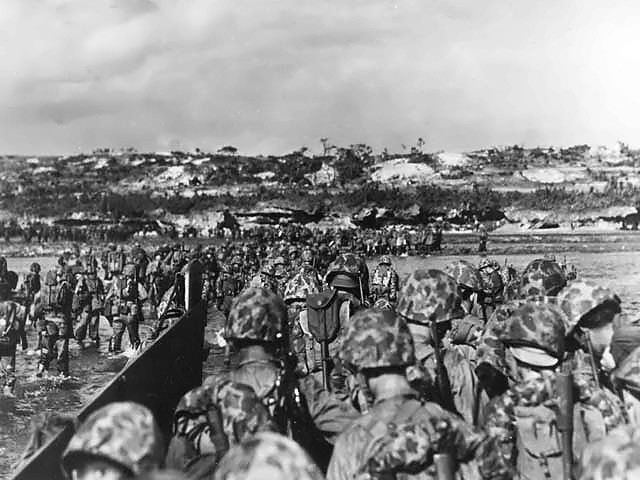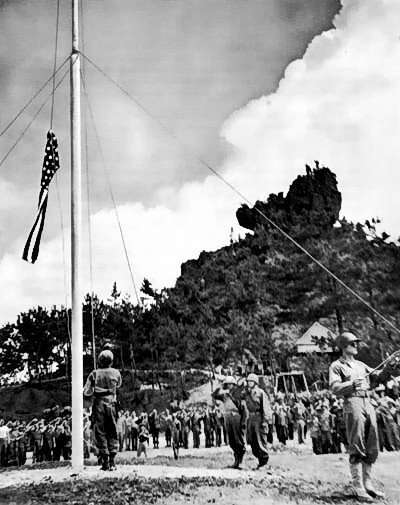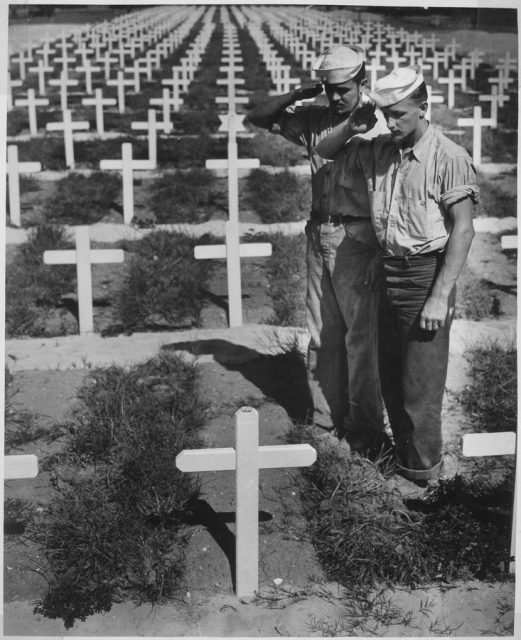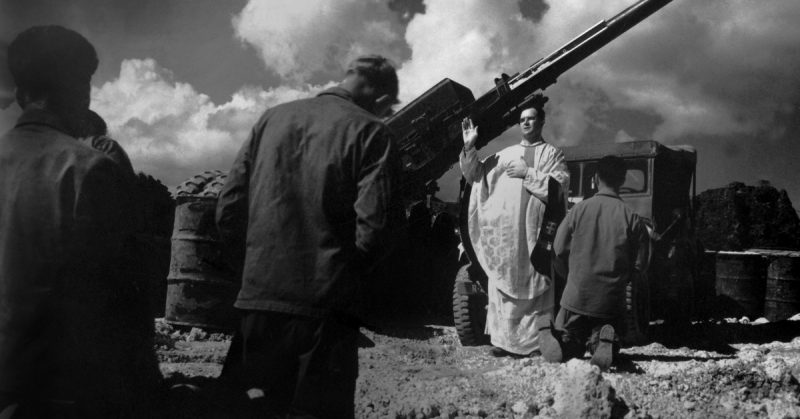Father Lawrence Edward Lynch grew up in Brooklyn, New York, one of twelve children in his family. His parents had emigrated from Ireland to America. He served as an altar boy in the local Catholic church and eventually became a priest.
During World War II, he joined the Army and was assigned to the 69th Infantry Division. He replaced Father Duffy, who had been portrayed on the silver screen by Pat O’Brien in “The Fighting 69th.” According to those who knew him at the time, he was a worthy successor to the post.
He soon became known as “Father Cyclone” for his tireless efforts in serving the men of the 69th as well as any civilians nearby. He was known for participating in poker matches with the men in the group in order to make money for a leper colony in the area. He won so much, the men began setting aside a certain amount of the pot for the lepers in order to keep the priest from winning all of it.

Brigadier General Julius Klein, who was Father Lawrence’s commanding officer in the Pacific, remembered the priest fighting for the rights of a Jewish soldier he felt had been discriminated against when passed over for a promotion. Klein said that Father Lawrence saw each person as a child of God no matter what their race, religion, or any other classification you could put them into.
When the two men were aboard a rescue ship aiding the SS Elihu Thompson, which had hit a mine, Klein directed the rescue operation while Father Lawrence comforted the dying, holding their hands and staying beside them so that they would not die alone. He would absolve the Christians of their sins. He even stayed beside a Jewish soldier as he died, reciting the Hebrew words of forgiveness. Klein never forgot Father Lawrence’s kindness, calling him his “favorite Irish rabbi.”
Father Lawrence always behaved as a priest first and a soldier second and was always at the side of anyone who needed him. He received five citations for bravery as he ignored the dangers to his own life in order to be with those in need.

In time, he found himself serving on Okinawa during that bloody and difficult battle. He stayed with the action, comforting the wounded and performing last rites on hundreds of soldiers.
On April 25, 1945, Father Lawrence rushed to the side of a soldier who had been hit by a shell. He was administering last rites when a second shell hit, killing both men. Father Lawrence was 38 years old at the time.
After the war, more than 4,000 servicemen gathered in Okinawa for a mass at Father Lawrence’s grave. A stream of servicemen made their way to his parents’ home to pay their respects.

A youth football league was started in his honor and named the Lynvets after Father Lawrence and other veterans.
A piece of land close to the borders of Woodhaven, Ozone Park, and Brooklyn was chosen for a memorial to Father Lawrence. A triangle of land at Atlantic Avenue and Rockaway Boulevard was also dedicated in his honor in 1949. There has not been any sign there, though, to recognize the life and work of the brave man who died in service to his country. That is, until now.
The Woodhaven Cultural & Historical Society and American Legion Post 118 have teamed up with Councilman Eric Ulrich to submit a request to the City Council to place a sign at the site. The hope is that a proper sign dedicated to Father Lawrence will be placed at the Father Lynch Memorial Triangle before next St. Patrick’s Day.
